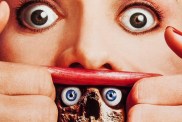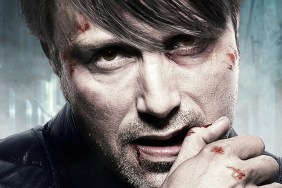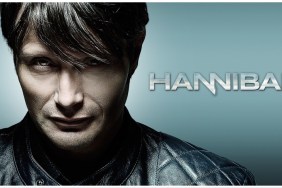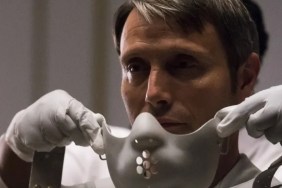
Youll see the snails again this season, by the way, Hannibal writer Nick Antosca wrote during the season premiere. It was a sentiment echoed and declared by Hannibal creator Bryan Fuller. These snails, so visually striking, but engaged in grotesque act (seem familiar?), and feeding off the fat of an amputated limb, are important. Theyll return. Do they ever leave? Im not sure the snails crawling up Dr. Abel Gideons forearm, or ingested by Dr. Abel Gideonor ingested by Gillian Andersons Bedelia are the only kind about.
Antipasto, the premiere of Hannibals third season (directed by Vincenzo Natali and written by Bryan Fuller & Steve Lightfoot) is arguably the series most stylish installment yet. Though Hannibal is regularly a pageant of hypnotic, high fashion horror, its move out of the harsher seasons of the Mid-Atlantic to the wealth and fine arts appreciation of Europe would necessitate it even further. The sensual cinema of Peter Greenaway, De Palma, Bertolucci, Roeg, Peter Stricklandmaybe even fucking travel adsswirl through the streets, the suits, the dresses, the cuisine, the lectures, the wallpaper and yes, the bloodshed. Nearly every drop of red is an intoxicating, slow dive splash, not unlike Bedelias bath, a beautiful rendering of her current deep, dark slide
Into a snail. In Antipasto, Bedelia believes she is of conscious, stable mind, not under the manipulation of Hannibal Lecter. While that may prove true (Bedelia is an enthralling character with similar silent, acute senses to Hannibal), its likely not. In a flashback, one of the scenarios that play with 2.35:1 aspect ratio (to quote a friend: not content with already being the most cinematic show on network television ) Bedelia is revealed to have deliberately murdered, with Hannibal now her guide, guardian on a dark path; hes referred to as the devil in the opening moments of the episode, after all.
Bedelia is a part of Hannibals European gorge. Ethics are aesthetics, Hannibal states, the formalist, style-loving viewer in me inclined to agree. While we know the psychiatrist as a man of unparalleled intellect and purveyor of fine arts and food, he was in limited space. Here, first in Paris and then Florence, he is overwhelmed. The episodes first scenes see him driving through and around cultural landmarks. This is a man who views his darker tastes in line with his refined ones. In Florence, everything becomes a part of his warped cultural landscape. This includes Bedelia, who dines on snails, while hinting she herself is one for Lecter. As is all this beauty, as are his new victims.
The snails are said to improve ones taste when a person is ultimately consumed. Hannibal is sweetening himself for the return of Will Graham.
Quick Thoughts:
The sound design in Abel Gideons final flashback, tapping his fork to the table is an intense, experiential choice. Gideon declaring himself as his body disappears.
The structure, far removed from Hannibals of the week leanings both fit its European setting, and further distinguished this as one of the most singular shows on television. It is a dream.
Though used in the novel, Hannibal, its worth pointing out Lecter alias Dr. Fell recalls the nursery rhyme, I do not like the well, Doctor Fell, The reason why I cannot tell









